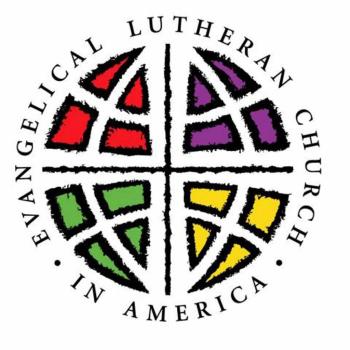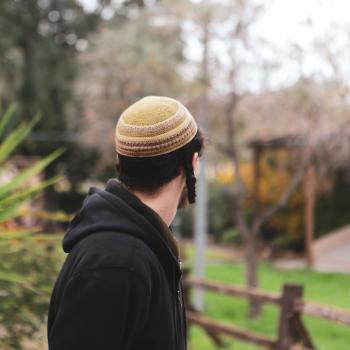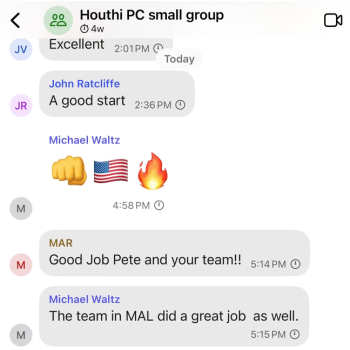The Discourse on the Bread of Life, concluded (6:51-59)
In the conclusion to the Bread of Life discourse, Jesus transforms the earlier discussion concerning the Mosaic bread from heaven by declaring:
Unless you eat the flesh of the Son of Man and drink his blood, you have no life in you. Whoever feeds on my flesh and drinks my blood has eternal life, and I will raise him up on the last day. For my flesh is true food, and my blood is true drink.
Jesus is no longer merely discussing Mosaic Bread from Heaven, but making a claim about the nature of the Messiah that many Jews would have found puzzling: the claim that the Messiah must be offer up his flesh and blood to provide eternal life. Jesus also foreshadows his later teachings on the mutual indwelling of God and Man when he adds, "whoever feeds on my flesh and drinks my blood abides in me, and I in him" (6:56). I'll discuss this important concept when it is fully developed in John 17.
With this conclusion of the Bread of Life discourse, Jesus completes his series of nutrition metaphors. Jesus has equated himself with of the four elements that Jews believed were necessary to sustain life.
- Breath/Spirit (3:1-8)
- Water (4:1-15)
- Bread/food (6:35-51)
- Blood (6:51-59)
The overall allegory is that Jesus provides the spiritual breath, water, food, and blood necessary to sustain spiritual life. Only those who accept Jesus as Messiah will receive this sustenance unto eternal life.
Eucharistic Words?
The references to consuming Jesus' flesh and blood have naturally been understood by Christians as allusions to the eucharistic bread and wine (note: wine is the "blood of the grape," Dt. 32:14). This is particularly the case with Catholics, who interpret this passage as pointing to the doctrine of the transubstantiation of the eucharist. Despite its significance in later Christian history, the problem with this approach when attempting to contextualize John in the first century, is twofold. First, unlike the Synoptic Gospels, the Last Supper/Eucharist is never actually described in John (Mt. 26:26-29; Mk. 14:22-25; Lk. 22:15-20). Rather, Jesus gives a lengthy discourse at the Last Supper (Jn. 13-17), but is not explicitly described as performing a blessing and distribution ritual of the bread and wine.
It is thus puzzling that in John, Jesus gives a lengthy discourse seemingly on the meaning of the eucharist, but never actually describes the ritual of the eucharist to which that meaning is supposed to be attached. This is one reason Raymond Brown has hypothesized that perhaps this section was originally found in chapter 13 as a Last Supper narrative, and was later transposed to its current position.
Second, since this discourse is described as occurring before the Last Supper, the original disciples and Jews of Capernaum who listened to this discourse would have had no eucharistic frame of reference with which to understand these sayings. That the original audience did not understand what Jesus meant is reflected by the fact that John claims many of the disciples abandoned Jesus precisely because of the strangeness of this discourse (6:60-65). It simply didn't make any sense to them.
Because of this paradox many scholars believe that the Bread of Life sermon is in fact a retrojection of post-resurrection Christian eucharistic theology into a pre-resurrection discourse by Jesus. This type of discourse where Jesus makes statements that his contemporaries misunderstand actually occurs rather frequently in John. The actual meaning of Jesus' teaching is understood only after the resurrection, when everything suddenly becomes clear. As modern readers of John, we all naturally read from a post-resurrection perspective. But it is worth the effort to clear our minds of two thousand years of Christian interpretation and read the text as if we were fledgling disciples of Jesus standing in the synagogue of Capernaum and hearing this charismatic teacher make these types of statements for the first time, with no foreknowledge of a forthcoming crucifixion, resurrection, or eucharistic ritual. What ideas and practices would Jesus' discourse have brought to mind?
Flesh and Blood as the Passover Sacrifice
In ancient Israel blood was understood to be the life-force of both animals and humans, distinguishing them from plants, which have no blood. "Only be sure that you do not eat the blood, for the blood is the life" (Dt. 12:23; cf. Gen. 9:4; Lev. 7:11, 14). Leviticus expands on this: "For the life of the flesh is in the blood, and I have given it for you on the altar to make atonement for your souls, for it is the blood that makes atonement by the life." Thus, if viewed from the perspective of Israelite temple sacrificial theology, shedding life-blood is required for atonement. Hence a cosmic, eternal atonement would require the life-blood of God. Thus, when Jesus says, "Whoever eats my flesh and drinks my blood has eternal life" he is alluding back to Jewish temple theology where sacrificial blood gives life through atonement. But instead of humans offering sacrificial animal blood to God, Jesus as God now offers his divine life-blood to mankind, and those who partake of that life-blood receive divine eternal life.





